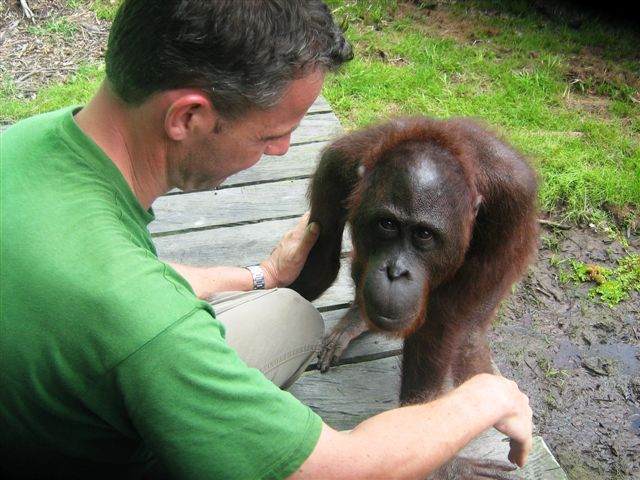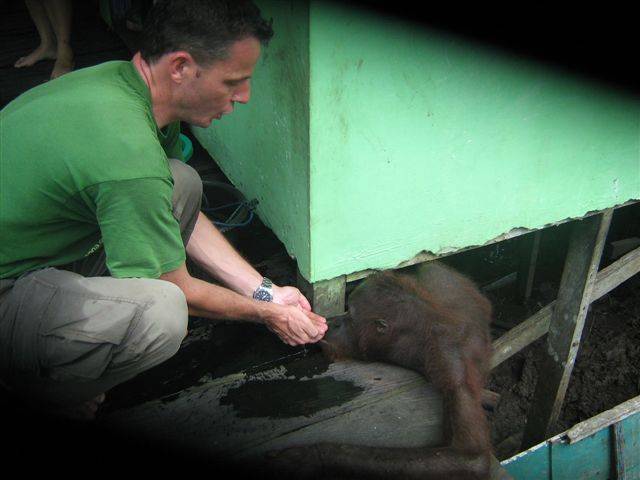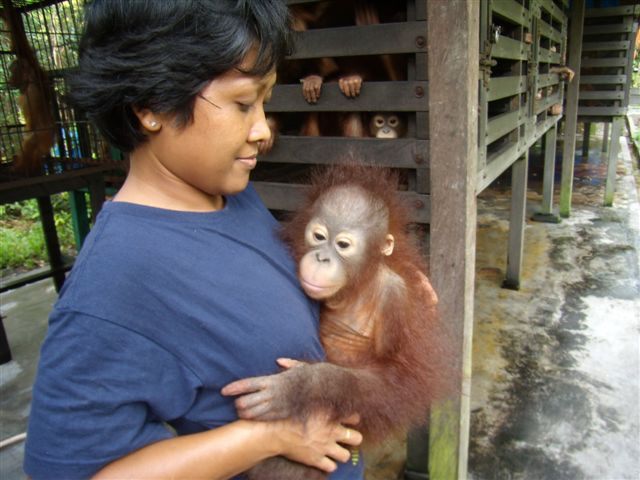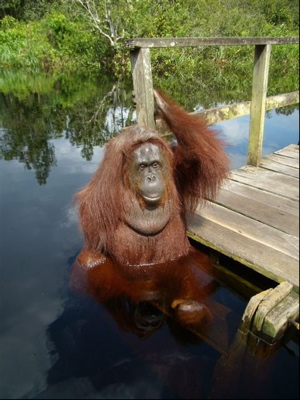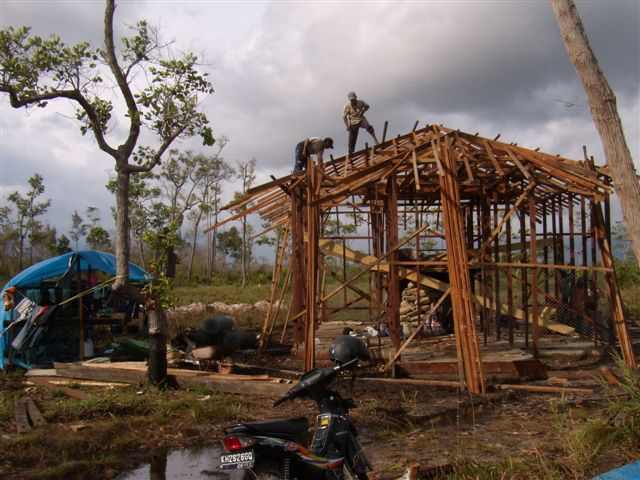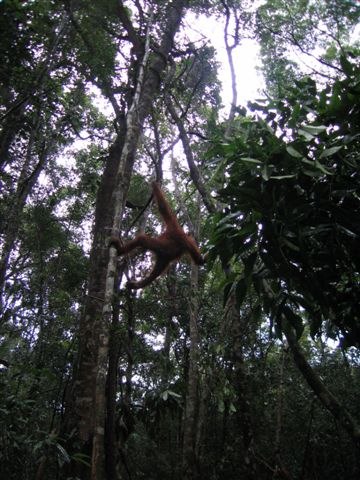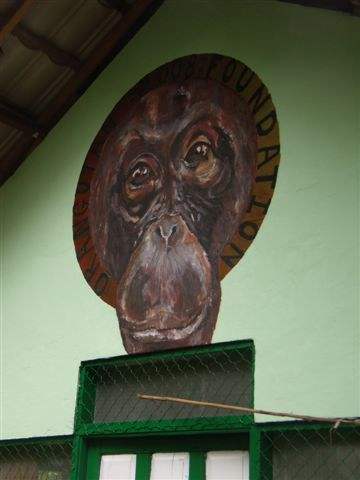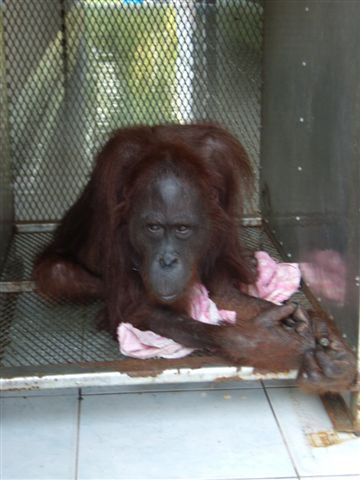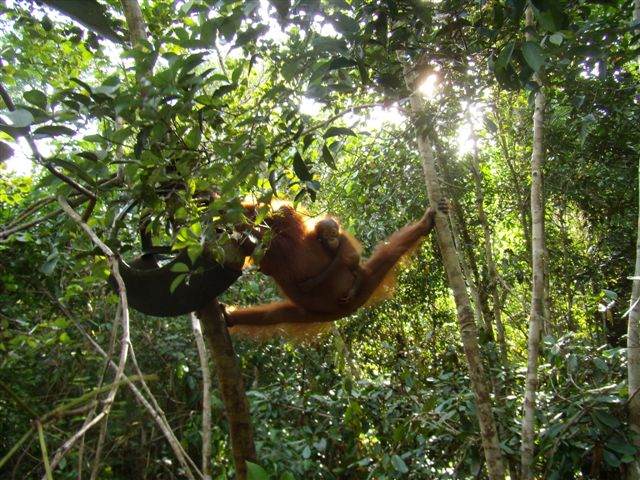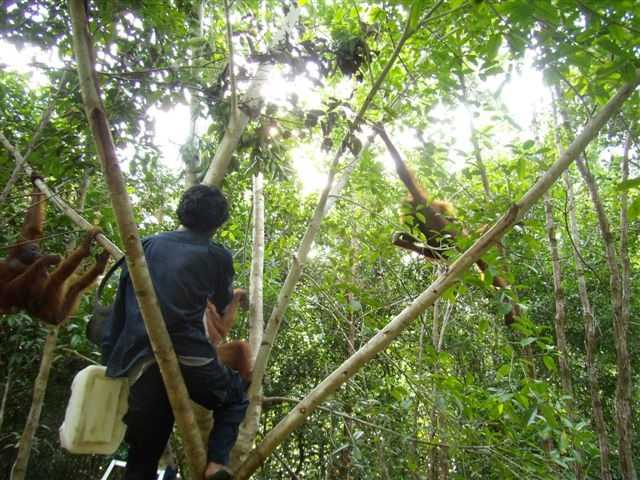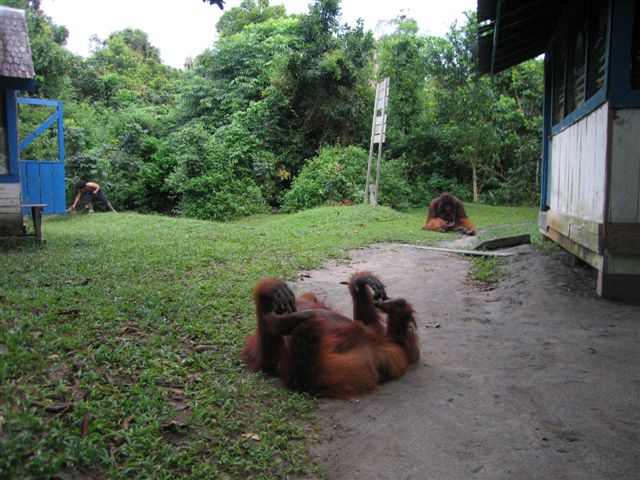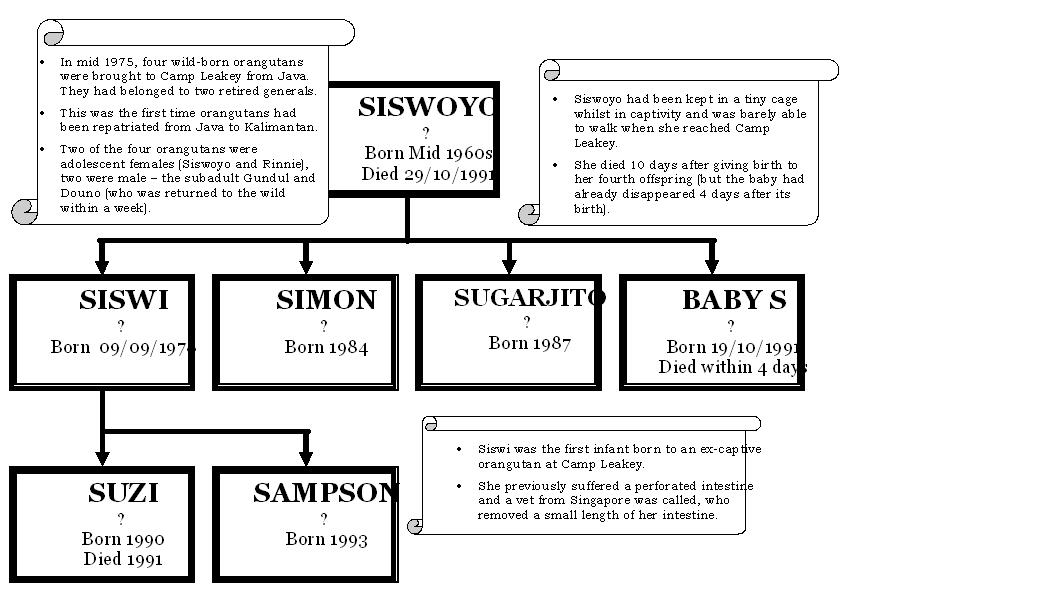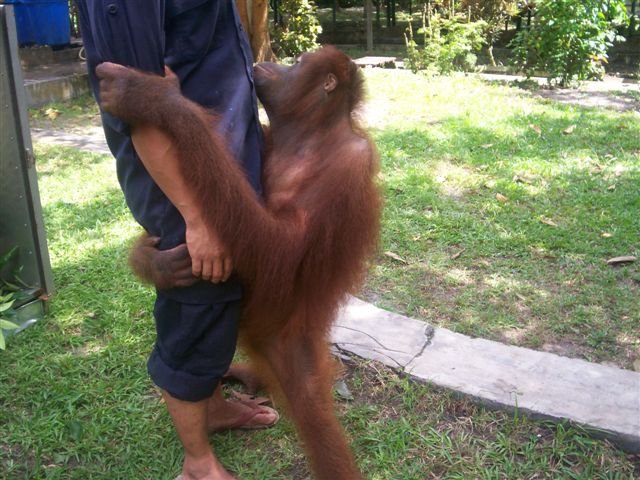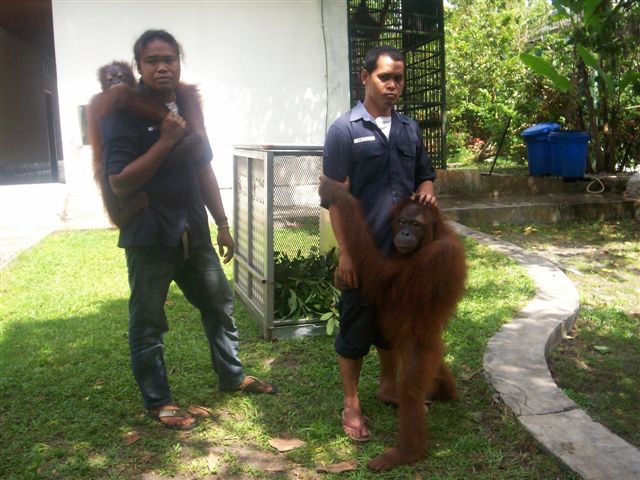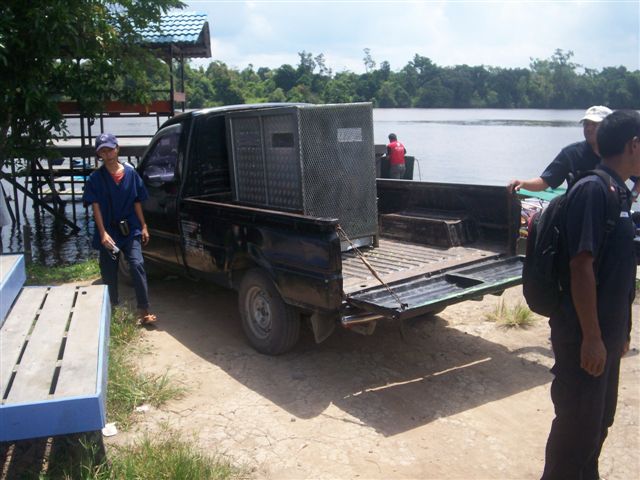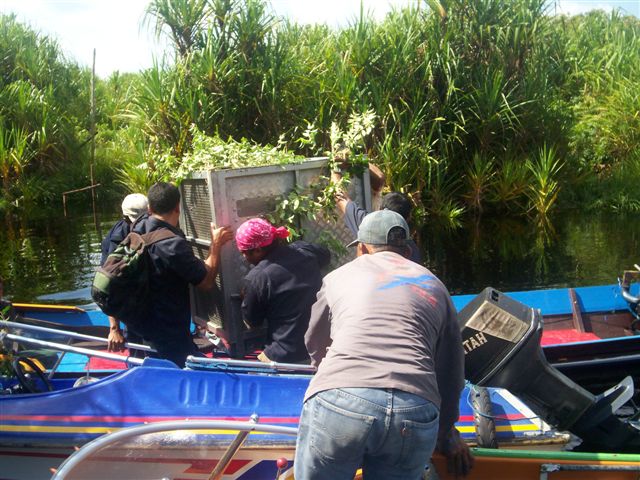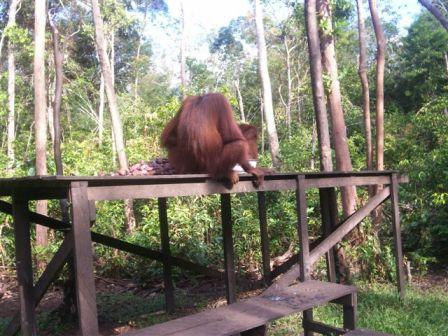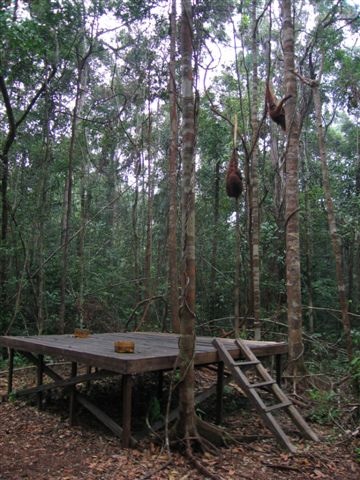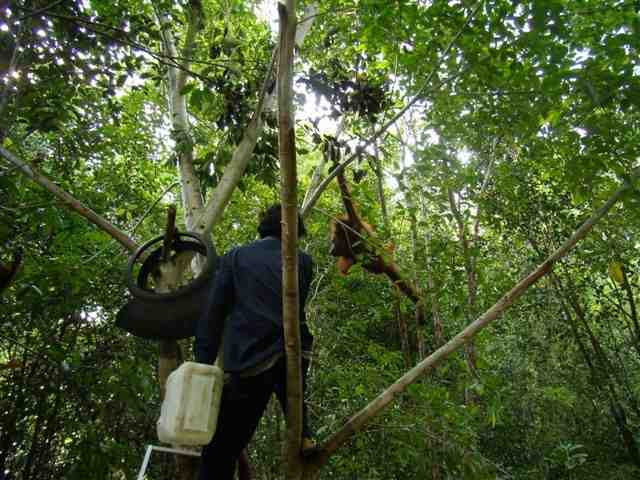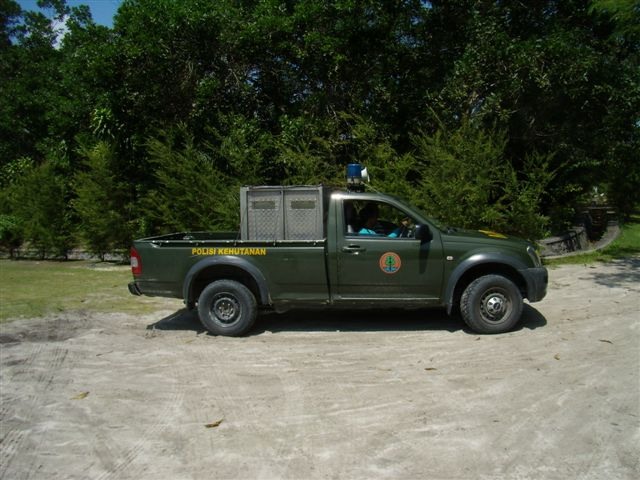We found Violet in a chicken coop. She was chained around her neck, covered in dirt, and scars, and she smelt. Her skin was dry and she had discharge from her eyes and a bloated abdomen. She had been fed the same food as the family who kept her: rice, tofu, vegetable and sweet tea. The owners claimed that they had “found the orangutan in their field six months ago.” At first they did not want to give her up because “they loved the orangutan”.

Violet with chain in chicken cage

Violet with the chickens

Violet being rescued by the mobile education team
Ironically, it was the mobile Education Team who found her. They had gone to the village of Bukit Raya, Central Kalimantan to raise awareness about orangutan conservation amongst the people. The cage they found Violet in was, at most, 1 x 0.5 meters and her mother had almost certainly been killed. The Education Team told the family the law and Violet was duly passed over. That same afternoon, she was brought to our Orangutan Care Centre and Quarantine Facility (OCCQ).
Violet stayed three week in Quarantine at OCCQ. Veterinary tests showed she was suffering from anemia caused by parasitic infestation: amoebic dysentery, to you and me. She was given the medication that she needed and plenty of food.


Photos, taken last year, of Violet at the OCCQ
Three and a half years on, and she is almost unrecognizable. These days, Violet lives in “Pondok Medang” along with 32 other orangutans. Every second day she is taken to the forest where she is allowed to climb and play in the trees. She can not go to the forest everyday because we try to separate male and female orangutans – we are happy if they have babies in the forest, but we do not want more babies at the Care Centre.
Violet clearly wants to live in the forest full time. On the days she goes into the forest, she climbs high into the trees and is reluctant to come down – even in the rain. This doesn’t make her too popular with her carers but they are pleased with her forest skills.


Violet up in the OCCQ forest
Rather worryingly, Violet has become bored with bananas. As you can imagine, they are a bit if a staple at the Care Centre. However, it is now mango season and Violet still loves mangos. When I last saw her, she was sat on a basket of fruit, which was meant for the other orangutans, greedily stuffing mango after mango into her mouth!
Two weeks ago, I wrote that I was going to the Care Centre and promised you a story. Violet’s is that story. There are over 300 orphaned orangutans at the Care Centre; it is impossible to follow all their progress. Some, however, touch you and Violet’s story is so tragic, but heart-warming, she is the orangutan for our Foster Programme.
I had gone to the Care Centre, for a meeting, to discuss the 10th anniversary of the creation of the Lamandau Wildlife Reserve, our Government designated release site. So far, 153 orangutans have been returned to a life in the wild in Lamandau’s forests. This year, we’re pushing for it to be Violet’s turn.


Violet now - soon she'll be given the chance to live in the wild once again.
I know I should have sent this blog to you as soon as I wrote it. As so often, we found ourselves juggling priorities and I never reached the “send stage”. Tonight – blissfully with electricity – I am also happy to say we had a steady drizzle for two hours, on the back of some heavy but localized showers last week. The rain is not enough to fill the swamps and rivers; two days ago I went passed our food store where we have a high and low jetty – the low jetty is still four feet above water level. However, the rain is enough to drop the fire risk, which is a relief. The beaters are almost ready; today we collected the rubber flanges. If the rain does not continue, with your help, we will at least be better prepared.
Again, I apologize for the lack of news but I am truly grateful for the support you give us. Keep your rain dancing shoes on!




